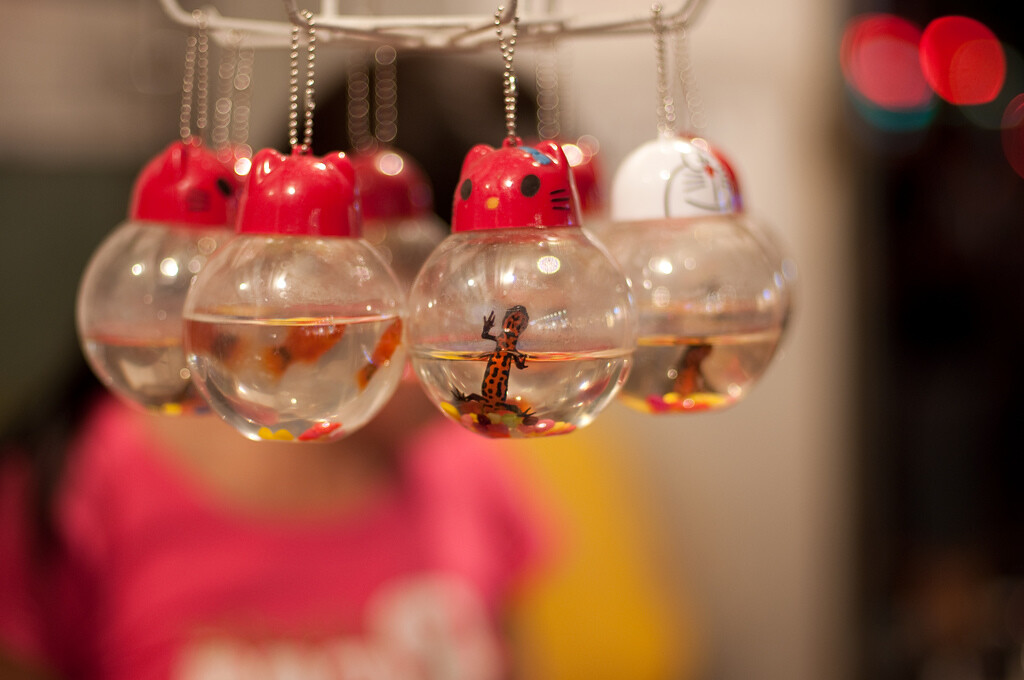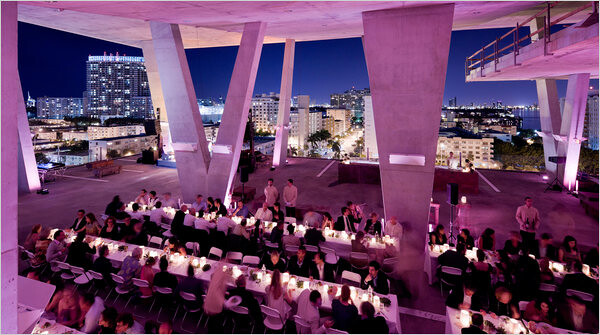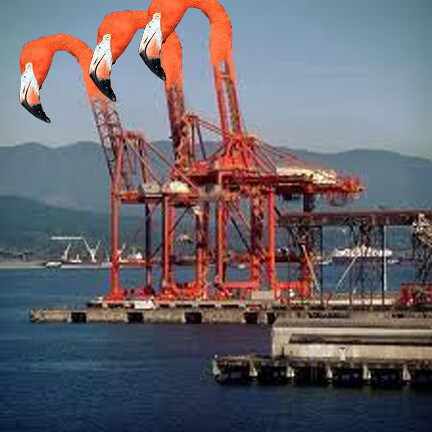What would happen if every souvenir shop and stand was invaded by an abstract souvenir, something that everyone, even children, recognize as a malefic mass? And what if this mass all of a sudden was to be acknowledged by a baffled population as a proper sign to identify the city by? What if, magically eliciting little hostility, the souvenir was simply accepted and reproduced, despite the diffuse disgust and pointed fear that it generated in everyone? Imagine hundreds of thousands of malefic and possibly animated masses—with a range of physiognomic variations, of course, as souvenir economies demand—cast in plastic and polychrome clay, produced in blown glass and in treated and pressed metal, all taking over the shelves and pushing past the doors of the establishments where they are housed and sold, leaving mucus trails behind them, climbing over Mexican sombreros and sliming rows of postcards, sullying flamingo towels and defiling squeaky rubber sharks, altering the temperature registered by map thermometers, and rendering inconclusive the “deadness” of the alligator-paw bottle openers. The paws seem to cringe in confused terror when approached by the malefic mass. What condition in the city, in its geography, in the behavior of its inhabitants, is suppurating these terrifying souvenirs? What dark underbelly of collective identity demands such an object? Is it the rightful compensation for the wretchedness of the locals?


The questions can also come from a different place. Is this souvenir even bound to the city that it purportedly represents? What if it was intended for some other place and the containers it was shipped in were accidentally sent to the wrong port? What if it was abducted by a risk-averse subset of Somali Pirates who took cargo in lieu of unpredictable hostages and abandoned it at sea upon realizing what they had in their hands, and the materials simply drifted onto shore and began to radiate out as they were absorbed by the local economies? What if this shapeless souvenir arrived like an invasive plant species, through clandestine channels, out-foxing border control agents, and settled in, put down roots, spread seed, and overwhelmed the local ecosystem of representational characters—eliminating alligators, flamingos, dolphins, mermaids, and manatees until nothing could ward off its steady advance?
Hundreds of thousands of shot glasses and refrigerator magnets begin to arrive from China. (We always know where they come from.) All of them are stamped with an image of the malefic mass. Leaving the port, trucks hauling container after container filled with screen-printed T-shirts and bathing suits drag this malefic mass across the city and into all the shops and bars near the beach. Lincoln Road Mall becomes the largest deposit of layers of malefic masses, a kind of sedimentary diagram of this unstoppable abstraction. An image of it is printed on a massive vinyl mesh sleeve and draped over the Herzog & de Meuron parking garage, 1111, replacing one icon with another. Masses are also painted by famous street artists on foreclosed and abandoned buildings throughout the city as part of beautification campaigns sponsored by the mayor’s office and desperate developers. The mass is cast in concrete so that it can be used as lawn ornaments and as camouflaged obstacles in pedestrian malls. The unstoppable invasion of the malefic mass happens slowly, as slowly as the invasion of Mexican sombreros in Barcelona, Sevillian castanets in the Bahamas, and Sphinxes in Las Vegas.
Imagine that these malefic masses, chromatically muddy and screen-printed with putrid and matte inks on rows of towels and T-shirts, begin to absorb all the light in the storefronts in which they are sold. They slurp the neon gas as if the glass tubes were straws. They even ingest the sunlight that pours in through the windows and photosynthesize it into waste product. They recast the souvenir shop as a zone of swelling opacity, of encroaching dark forces, of fading details, of extravagant expenditures of energy without positive outcomes. Things are only eaten away and blinked out in there. Do these souvenirs evoke a buried past—ancestral sins and distant atrocities clawing their way out of deep caves of repression? Or are they pointing to something that is slowly materializing on the horizon, to some coming catastrophe? Are they inventing a dreaded condition, prefiguring or courting dark disaster and forcing the city to assume it? Maybe they are pointing to the very end of the city, to that moment in which urban texture is so generic that to attempt to produce any kind of coherent sign system to represent it is a ludicrous task.
In time, the malefic mass will go global, like certain celebrities. Eventually, the Swedes and the Japanese and the Egyptians will take the malefic mass back home with them, across the ocean, through customs checkpoints in which bored agents will confuse it for a benign blob without the dark intention of swallowing differentiated urban texture. Perhaps the true depth of the mass’s terrifying quality is only obvious to us, who blew life into it as a figure to contour an abstraction, who can perceive it in its totality, who understand the invasive drive that animates its ability to generate reality. It’s a supermass that overtakes everything, but slowly enough to curtail the possibility that any desperate call to action be put to the city’s inhabitants or for product recalls to be issued. It alters the weather at a measured pace. It absorbs massive amounts of sunlight and heat but never in a single swoop. It becomes slowly less visible, less of an image, and, in time, it is only a terrifying entity, a blank space without identity. It makes the city like this as well. It incorporates the object it stood for into its fundamental formlessness.


And what if the hordes of flamingos that have slowly taken over our shot glasses and towels and lottery tickets, invading our landscapes and imaginations, are a temporary stage in the slow emergence of a malefic pink mass that will eventually overtake the city, an abstraction that will reconfigure even the categories of our thinking? What if it is waiting at the moment for someone to blow life into the connective ligaments that will articulate its melted-together body? Isn’t this already happening? PortMiami announced a few years ago that the four Super Panamax cranes that it was having built in Shanghai would be painted flamingo pink (along with the two that were already there) so that we could have a flock of gigantic souvenirs permanently tattooed against the horizon. A towering image to represent the city: crane-flamingos against a beatific sunrise. In no time, we imagined, this image will begin to grace postcards and Flickr feeds, and it will migrate to T-shirts and keychains and towels. Tropical typographies will dance around it. Eventually it will mutate into the city’s official logos and campaign signage. It will seep into our neural lines, our cognitive landscapes, and even be distorted in our night terrors. The numbers—of the images, but also of other flamingo-structures and souvenir-buildings—will swell to such a degree that it will make little sense to speak of differentiated specimens, of individual manifestations. It will just be one massive pink mass invading the city, assuming the shape of birds and buildings only as a way to disguise its dimensions and extravagant force.


Crane-flamingos. They never happened—or haven’t yet—but the idea, the ideological substrate of the thinking that authorized them, was suddenly exposed. It had already rooted and tendriled itself around “urbanistic common sense.” It is a souvenir that is both a sign of the city and an element inscribed in the urban texture: no longer only a reflection of the city, but the city itself. This is to say, the end of the city. When the souvenir seeps into the chromosome sequences of contemporary architecture, we’ve left behind the fable of the Generic City and the detrimental effects of speed building; we’re beyond starchitects and urban planning. We’ve entered much stranger territory. We’ve butted up against the possibility of living inside souvenir-world—on palm tree islands and tropical Alpine villages. The duck shed has exploded into the flamingo skyline; oddity has become norm. New buildings will be erected to resemble the souvenirs of buildings that no longer exist. Not Mies, but the Mies plastic keychain skyscraper is source and inspiration. A malefic mass of souvenir-architecture spreads and layers the globe with a new crust. We will be able inhabit this souvenir-world the same way we once thought we could live inside the Ville Spatiale. But, of course, with this difference: La Ville Souvenir has arrived through stealth rather than through theoretical proposals and museum installations, or stowed away in styles friendly to it, like postmodern architecture, Memphis design, or parametric hypertrophies. It never got stuck in the swamp of the manifesto or in reams of drawings. It never posed perfectly for the JPEG that could be multiplied inconsequentially in every sort of media outlet. La Ville Souvenir, like a malefic mass that no one noticed until it was too late and it had overtaken everything, simply spread itself cunningly across the hard surface of reality.


